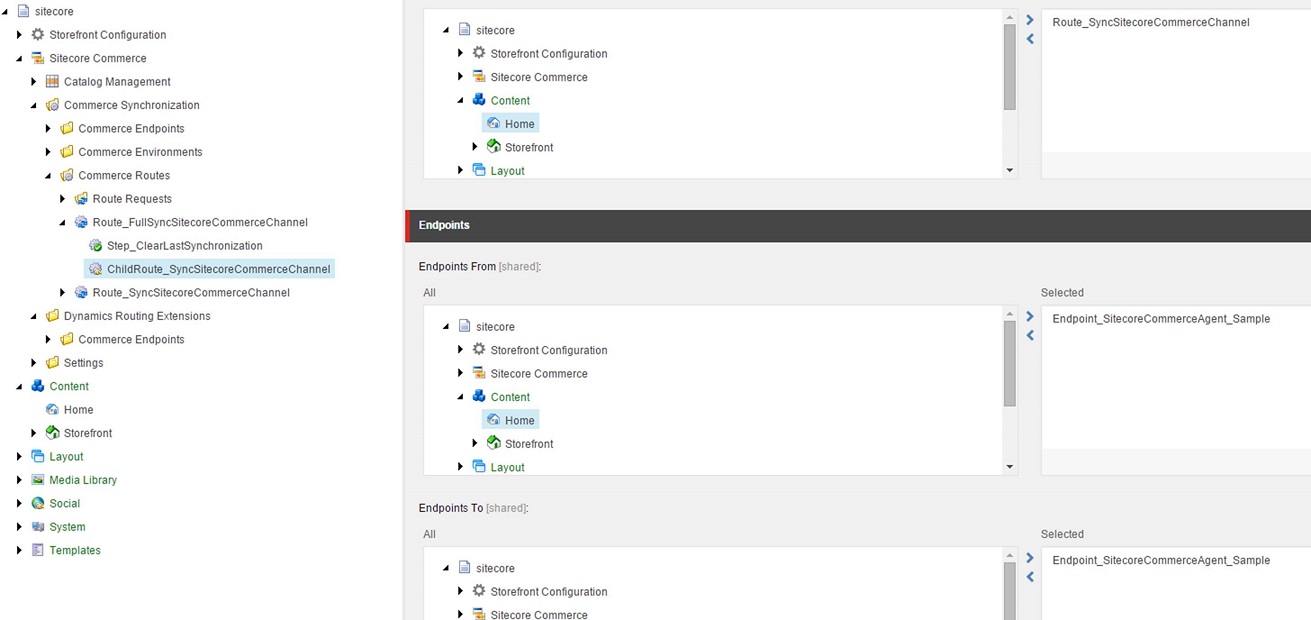Extending Routes
Routes can be extended by adding or removing nodes in the Routing Management Node in the Sitecore Content Editor.
Each route step performs a specific task of extracting data, adding value to data, or transforming data into destination formats. The task for each route step is defined in a specific assembly/class. The default behavior can be overridden by supplying a different assembly/class to process, and additional steps can also be added.
Routes work against endpoints. These endpoints are either source endpoints or destination endpoints. For example, a source endpoint is the Microsoft Dynamics AX for Retail Commerce Run Time. You can configure connectivity to one or more endpoints, and allow for configurations for a variety of purposes. Other examples are an endpoint connecting to Dynamics, a file system endpoint for interim storage of extracted data, or an endpoint for connecting into the Sitecore Commerce Catalog subsystem.
Route steps can also be a reference to a Child Route, to efficiently reuse route steps in multiple, larger routes.

Routes for Dynamics AX are supplied as source code in the SDK, and are easily modified to suit individual needs.
Navigate to
Sitecore Commerce/Commerce Synchronization/Commerce Routes.Right-click the route node you want to add a new step to, and select the Child Route template.
The File System endpoint can be used in scenarios where extractions from Dynamics Retail are first pushed into a file system. A separate process is then used to move the files into the next step. This is useful when the source Dynamics AX system and the destination Sitecore system are in differently accessible environments and a file-based hand-off is needed.